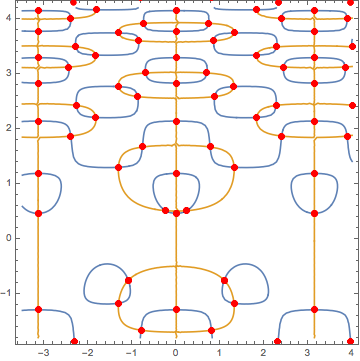Not sure if this is really relevant, but you should look this up. Sharing my solution:
FindCrossings2D[{f_, g_}, {x_, xmin_, xmax_}, {y_, ymin_, ymax_}] :=
{x, y} /. (FindRoot[{f[x, y] == 0, g[x, y] == 0}, {{x, #[[1]]},
{y, #[[2]]}}] & /@ (ContourPlot[{f[x, y] == 0, g[x, y] == 0},
{x, xmin, xmax}, {y, ymin, ymax}][[1, 1]]))
f[x_, y_] := -Cos[y] + 2 y Cos[y^2] Cos[2 x];
g[x_, y_] := -Sin[x] + 2 Sin[y^2] Sin[2 x];
pts = FindCrossings2D[{f, g}, {x, -7/2, 4}, {y, -9/5, 21/5}];
ContourPlot[{f[x, y] == 0, g[x, y] == 0}, {x, -7/2, 4}, {y, -9/5, 21/5},
Epilog -> {AbsolutePointSize[6], Red, Point /@ pts}]
